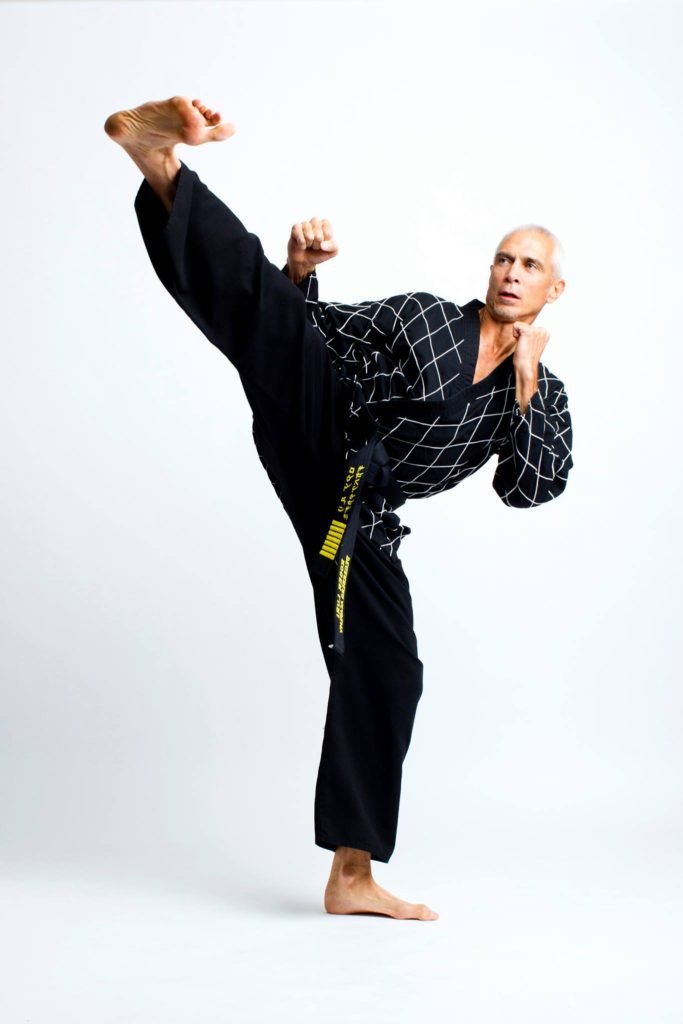High kicks are a difficult and necessary part of many sports and martial arts. Not only do they require power, but also balance and flexibility. Many martial arts trainees struggle with gaining height on kicks, possibly because they are not addressing the basic physical limitations to how high one can safely reach their foot.

Here are some tips for training high kicks, and gradually sending them higher.
Warm Up
A surefire way to strain or injure muscles is to enter into high intensity stretches without warming up. Start with low stress stretches, as you would before any other workout, focusing on the core, groin, and hamstrings. When sufficiently stretched, begin a 10-15 minute session of cardiovascular work to get the blood flowing. This can be running, high knees, jumping rope, or whatever you prefer to get your heart rate up and your muscles loose.
Stretch for Results
Once warmed up, the work of increasing flexibility in the hamstrings, hips, and groin can begin. Many higher intensity stretches can increase strength in these regions, but the one that seems to work best is splits.
Sitting on the floor with your legs spread as widely as they can, place your hands in front of your groin, and transfer your weight onto your hands. In this position, you can begin rolling forward, expecting discomfort, and exiting the stretch when discomfort becomes extreme. Practicing deep breaths while stretching will help you dig deeper into the stretch and get better results.
Alternating between this stretch and sets of lunges will improve strength and flexibility in areas necessary for high kicks.
Improve Balance
Balance is often ignored in the high-kick equation. Logically, however, the ability to stand firmly on one leg while kicking with the other proves massively important for power and dexterity.
Part of improving balance is building core strength. Yoga, pilates, and core exercises like planks are good places to start. Additionally, try practicing balancing on one leg for 30 seconds while chambering your other leg as if preparing for a kick. Once you can manage 30 seconds of this, move up to a then a minute or longer. Slack lining and rock climbing are also stimulating and effective exercises that improve balance and foot agility.
Practice Kicking
Now that you’re stretched and warmed up, practicing some high kicks is the last step. Snap kicks and forward push kicks are the best kicks to start out with. Once you have your front kicks down down, move on to roundhouse kicks and side kicks. If you have difficulty, you can brace yourself against a chair or table for support while you try to get your leg up in the air. Another good routine is to have a partner lift your leg slightly higher than you can on your own and hold it in place for you.
If you keep stretching and practicing, you’ll be kicking higher in no time!
